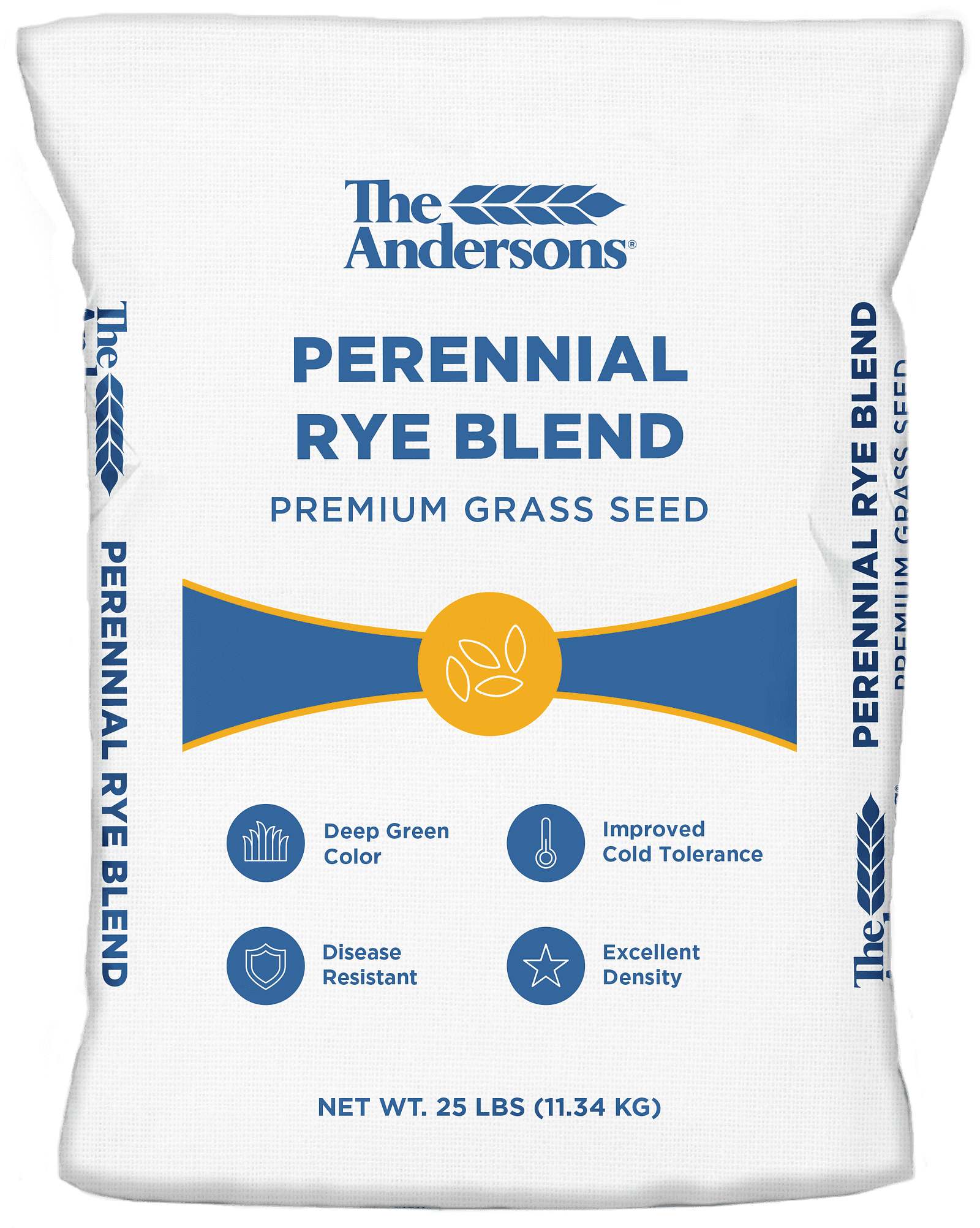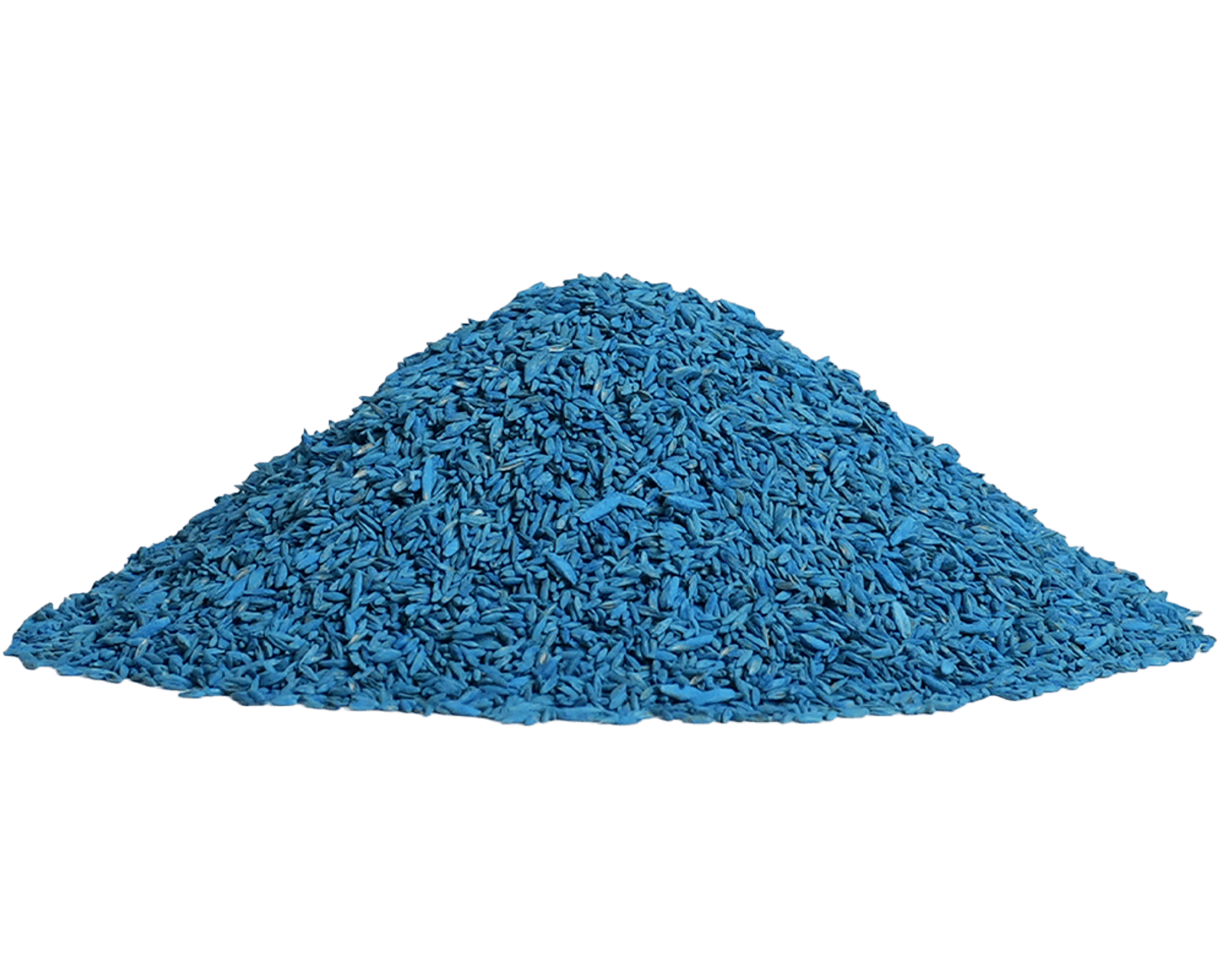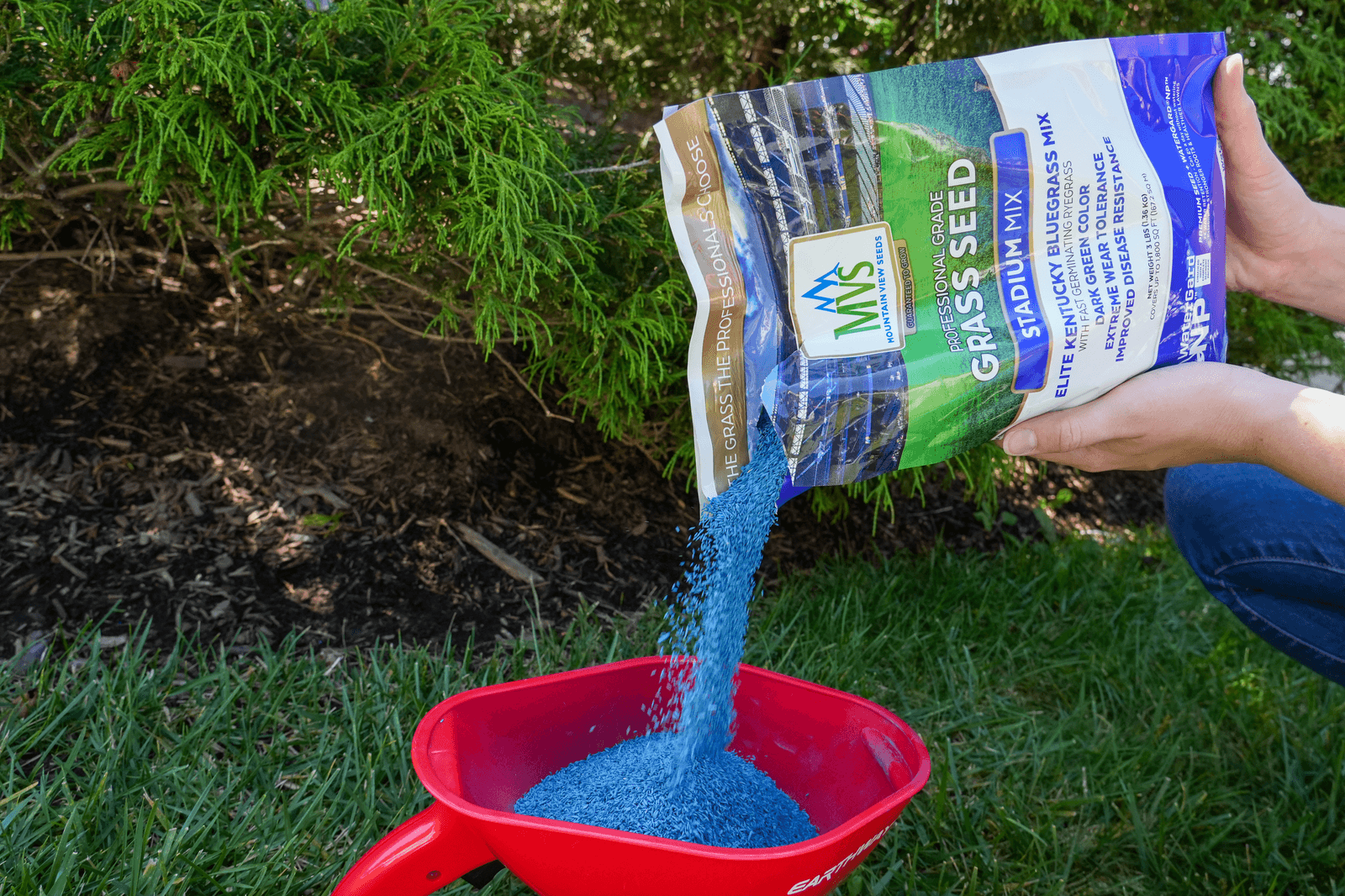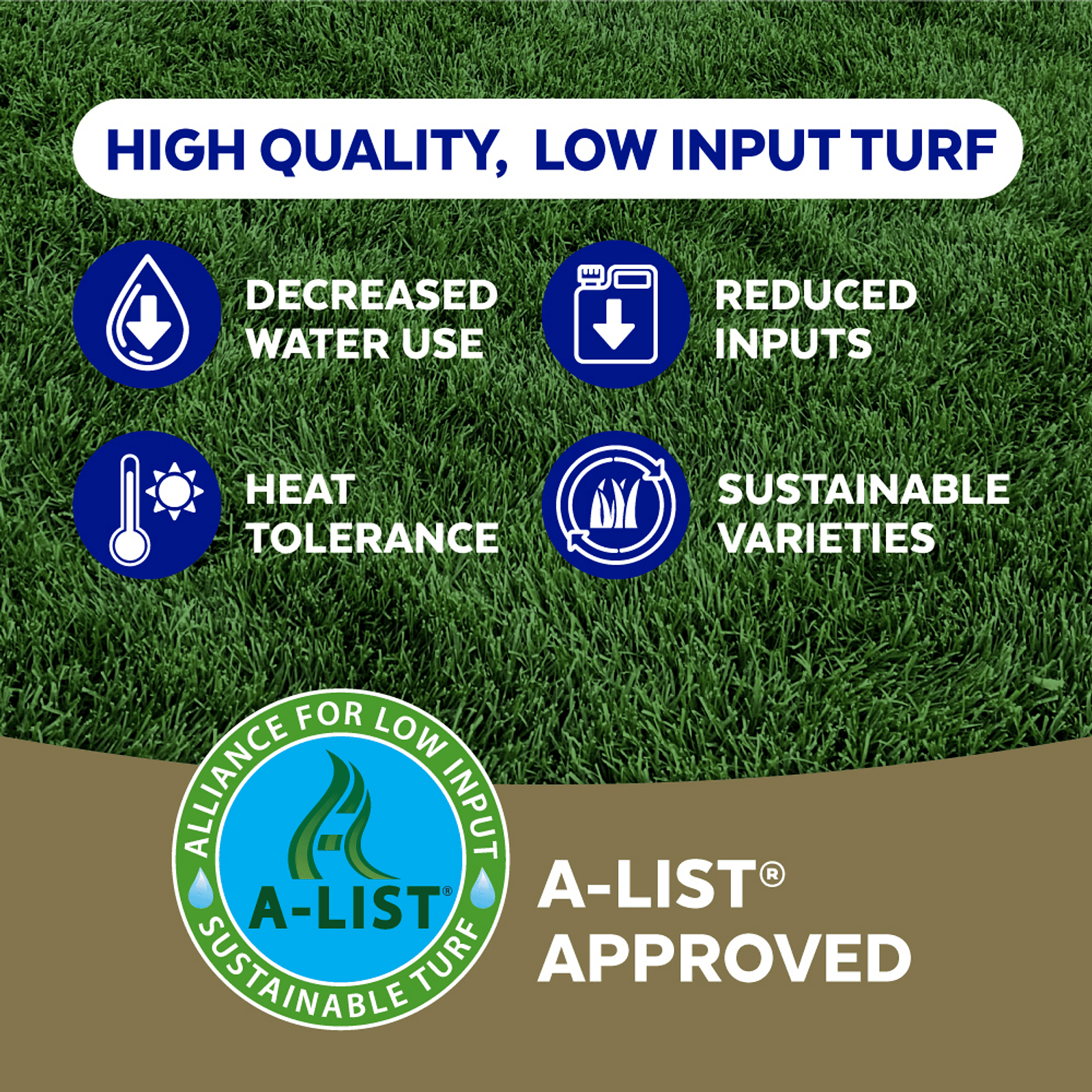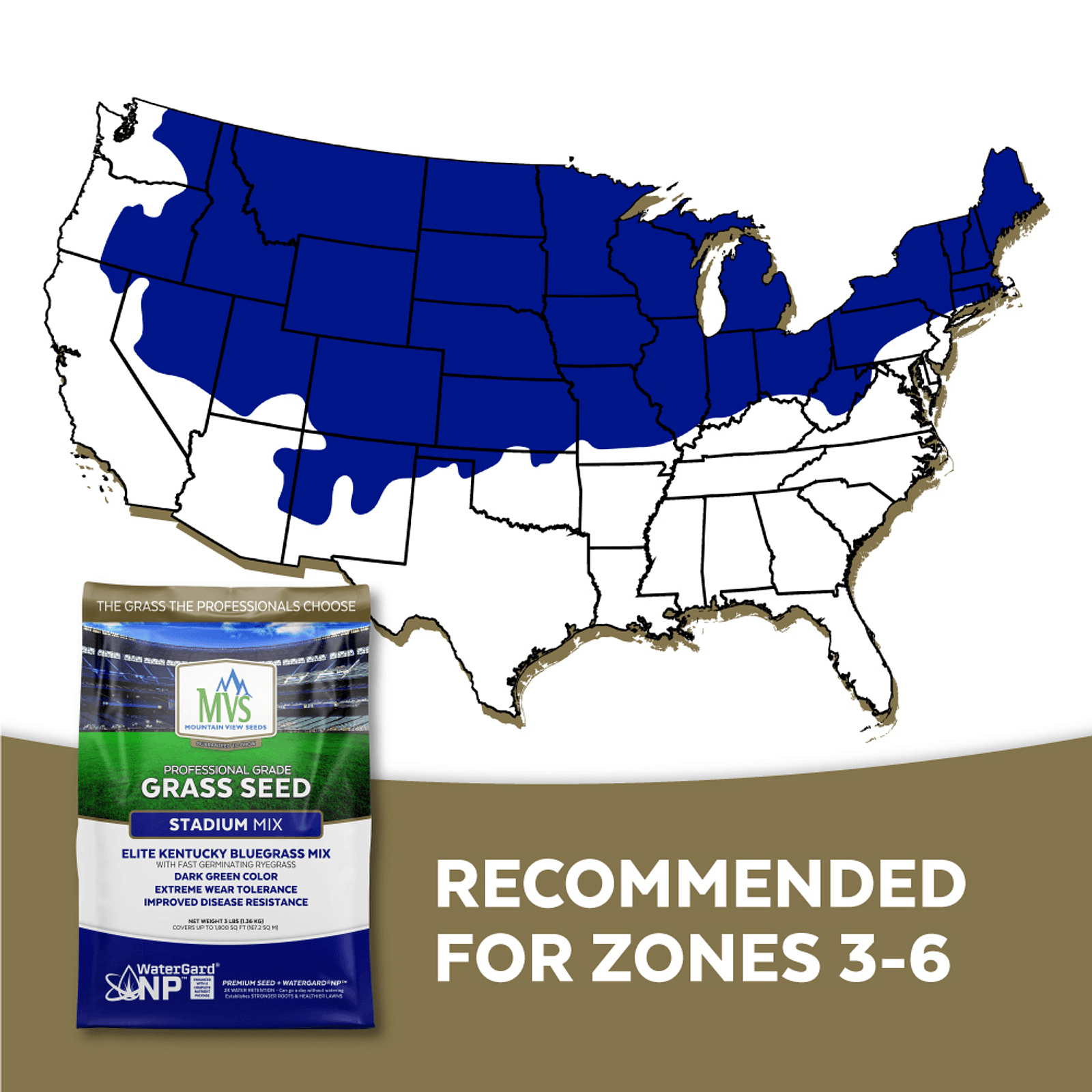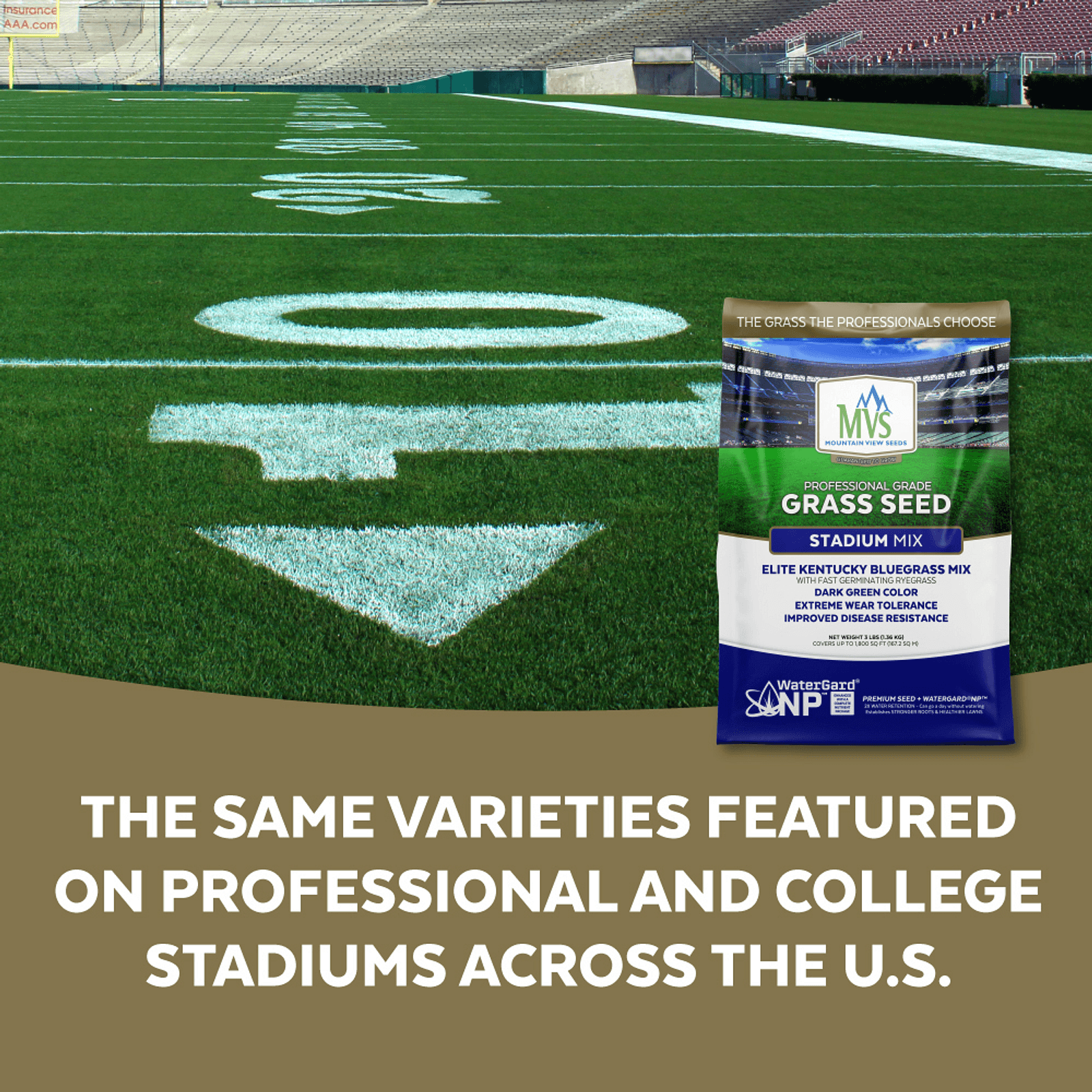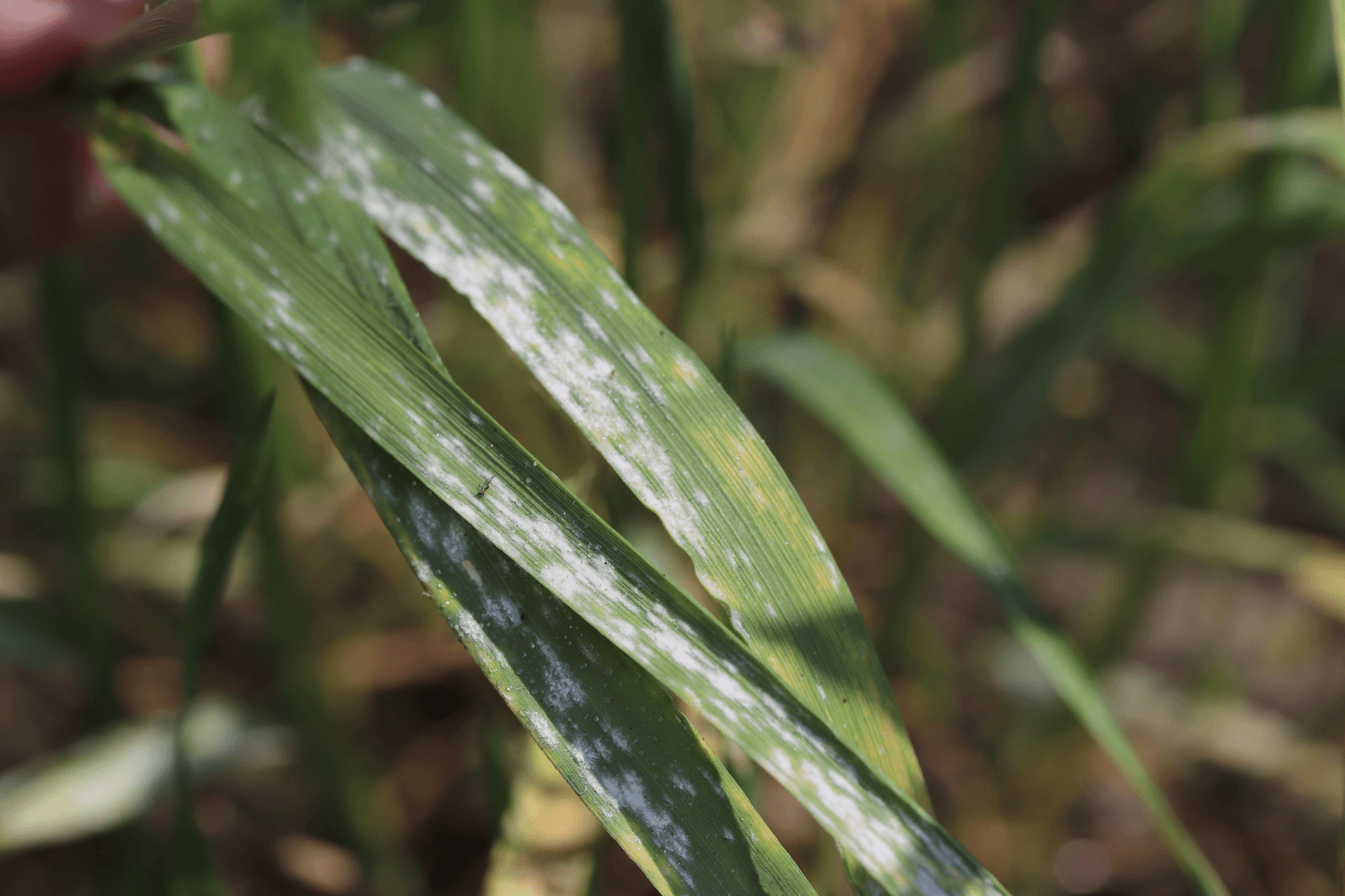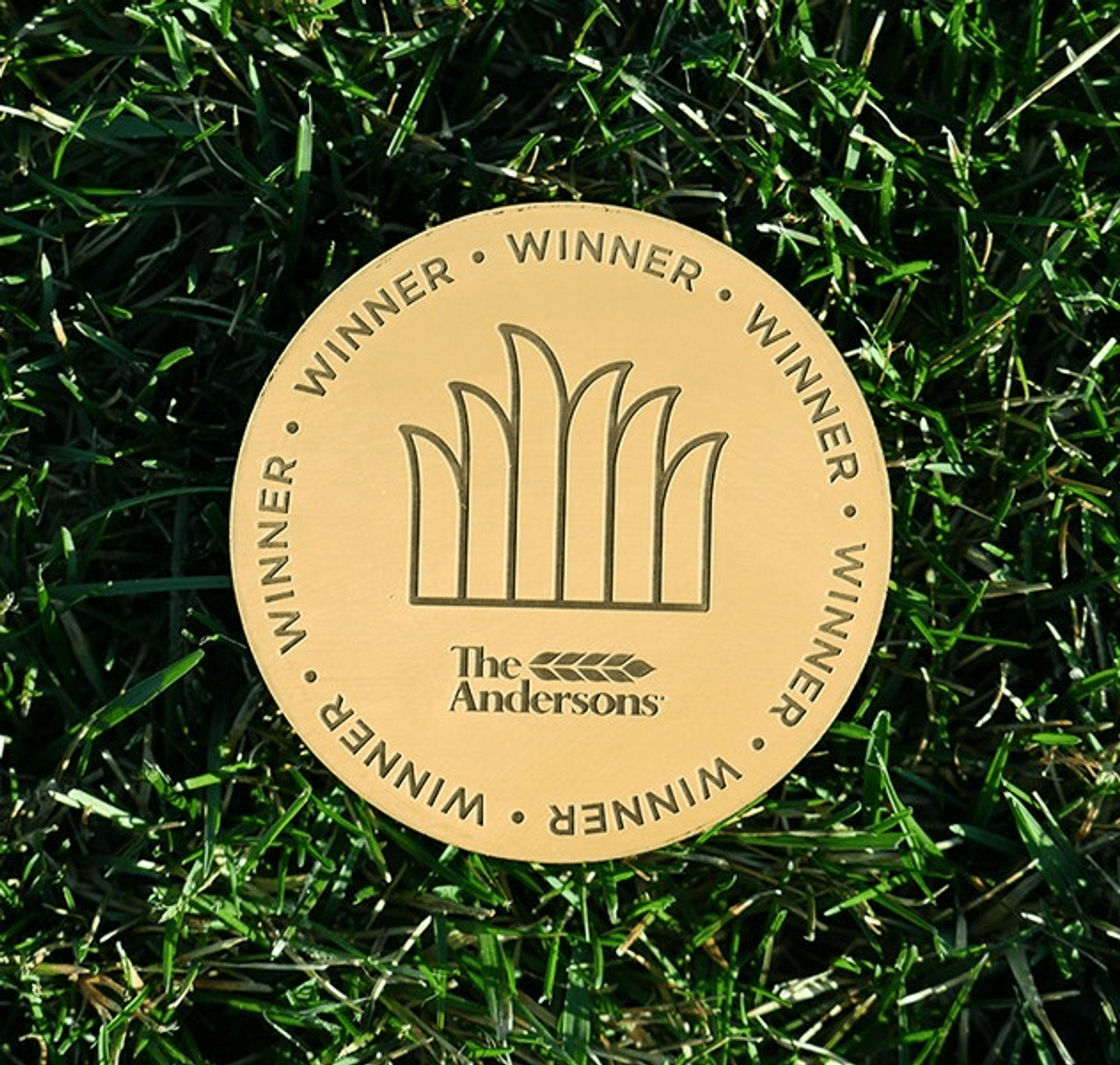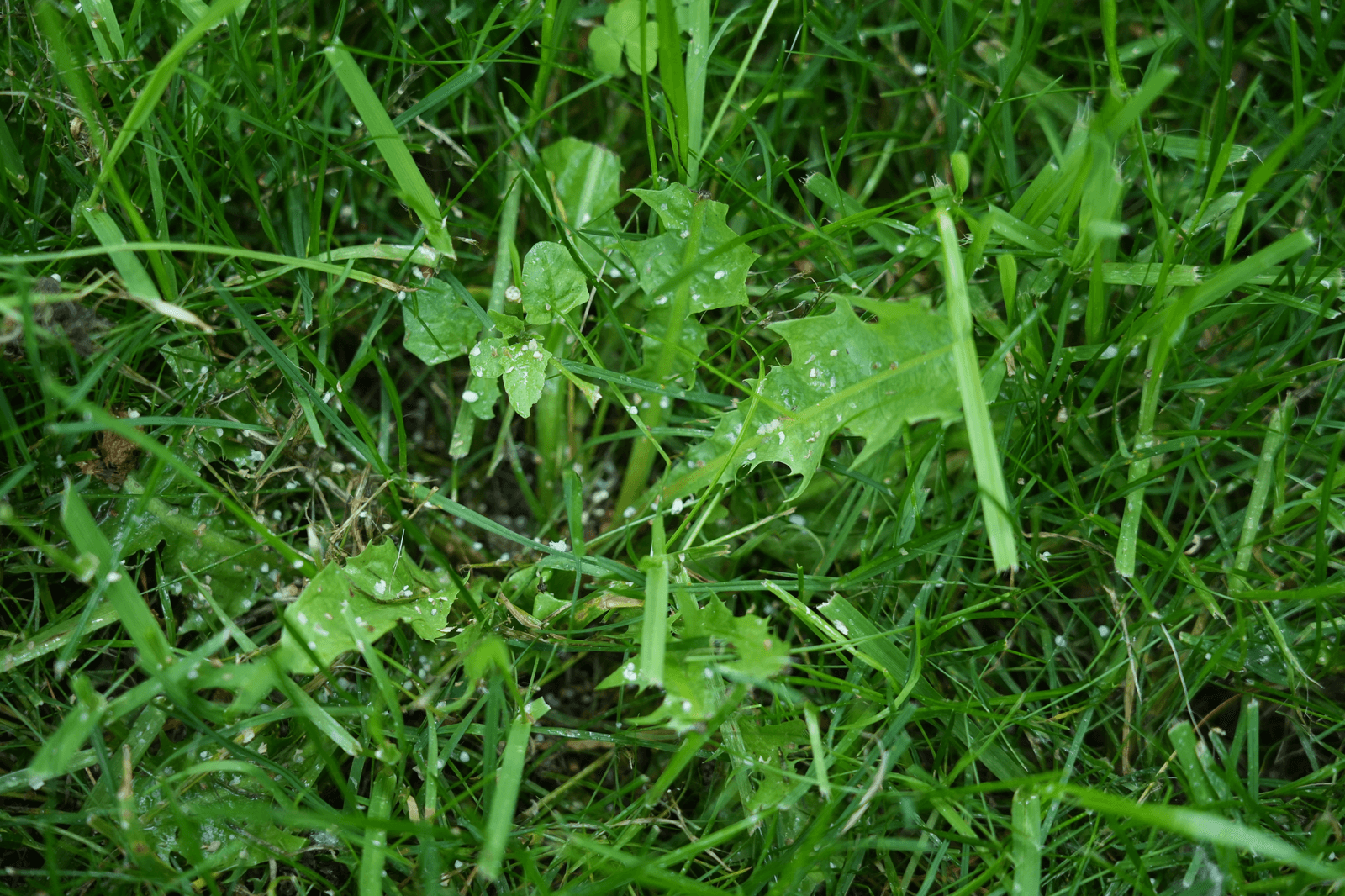Stadium Mix Kentucky Bluegrass
Premium Grass Seed
- Elite Kentucky Bluegrass mix
- Used on some of the nation's top sports fields
- Dark green color
- Extreme wear tolerance
- Improved disease resistance
- Seed is coated with Watergard NP to provide 2X water retention
- Contains 0.00% weed seed
- Ideal for cool-season turf locations
- Grows best in full sun to partial shade
- Covers up to 1,800 sq ft for over-seeding an existing lawn and 600 sq ft for seeding a new lawn
- Product of the USA
Overview
Stadium Mix Grass Seed is an elite Kentucky Bluegrass blend designed for high-performance lawns and sports fields. Known for its dark green color, extreme wear tolerance, and improved disease resistance, this mix ensures a lush and resilient turf. Each seed is coated with Watergard NP, offering double the water retention and an essential nutrient charge for a strong, healthy start. Ideal for cool-season turf locations, Stadium Mix thrives in full sun to partial shade. Trusted by some of the nation's top sports fields, Stadium Mix delivers a professional-grade lawn for both athletic and residential use.
| Package Sizes | 3 lb |
SEEDING WITH STAIDUM MIX KENTUCKY BLUEGRASS SEED
PRO TIPS
• Plant in springtime after the last frost or in the fall 30 days before the first frost
• The ideal soil temperature for planting cool-season grasses is between 55 and 85 degrees Fahrenheit
Seed-to-soil contact is required for proper seed germination
• Plant in an area that can be maintained with moisture
• Moisten the soil to a depth of around 1 inch. Keep the root zone moist by watering 2 to 3 times per day (rainfall depending). Avoid creating puddles. Keep soil moist until the new lawn has fully germinated, 3 to 4 weeks.
PLANTING A NEW LAWN
Prepare the Seedbed
• Loosen the soil to a depth of 3 to 4 inches
• Rake and smooth; remove rocks and debris
• Apply fertilizer of choice per label directions
• DO NOT apply weed and feed fertilizers for at least 6 weeks after planting seed
• Spread seed evenly. Use the “Spreader Settings” chart to determine the amount of seed needed to cover the area.
• Lightly rake or rollover area to cover seed with roughly 1/8 inch of soil
TO OVERSEED EXISTING LAWN
• Mow grass on your mower’s shortest setting. Then, remove all excess vegetation and scratch the soil to 1/2 inch depth. This will ensure good seed-to-soil contact.
• Spread seed evenly. Use the “Spreader Settings” chart to determine the amount of seed needed to cover the area.
AFTER PLANTING CARE TIPS
WATERING
• Moisten soil to a depth of around 1 inch. For best results, keep the root zone moist by watering your new lawn 1 to 2 times daily (rainfall depending).
• Keep soil moist until the new lawn has fully germinated, typically 3 to 4 weeks
• Lack of proper watering is the most common reason lawn fail to establish!
MOWING
• Do not mow your new lawn for the first time until the blades reach 3 inches tall.
• Remove no more than 1/3 of the blade.
Related Products

